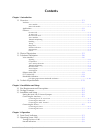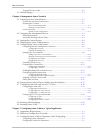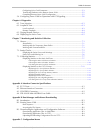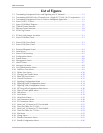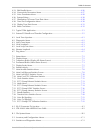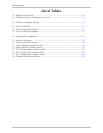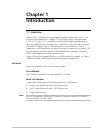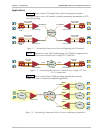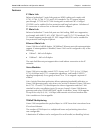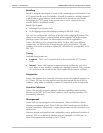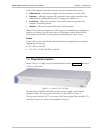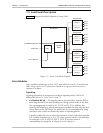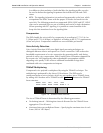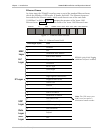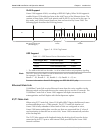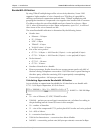
Vmux-2100 Installation and Operation Manual Chapter 1 Introduction
Overview 1-3
Features
E1 Main Link
Balanced redundant E1 main links ports use HDB3 coding and comply with
G.703, G.704, G.706, G.732 and G.823 standards. The E1 framers support
pass-through, G.732S and G.732N framing with or without CRC-4. Integral
LTU/DSU can be enabled for line protection and long haul options. Unbalanced
E1 connection is achieved via an external interface adapter.
T1 Main Link
Balanced redundant T1 main link ports use AMI coding, B8ZS zero suppression,
and comply with ANSI T1.403, AT&T TR-62411 and ITU-T G.703 standards. The
T1 framers support pass-through, SF, ESF. Integral DSU/CSU can be enabled for
line protection and long haul options.
Ethernet Main Link
Vmux-2100 has a half/full duplex, 10/100BaseT Ethernet port with autonegotiation
support. If autonegotiation is disabled, Vmux-2100 can be configured to any of the
following:
• 10BaseT – half or full duplex
• 100BaseT – half or full duplex.
The main link Ethernet port supports direct and indirect connection to the IP
networks.
Voice Modules
Vmux-2100 voice modules control E1/T1 frames, use G.723.1 (6.4 or 5.3 kbps),
G.729 A (8 kbps) and G.711 compression algorithms, and handle CAS/CCS
signaling transparently. Every group of two E1s or T1s is assigned a separate IP
address.
Voice Activity Detection mechanism allows optimizing bandwidth utilization, as
Vmux-2100 generates traffic only when voice activity is detected. Vmux-2100 uses
the G.723.1 A and G.729 B techniques for silence suppression and the G.168
standard for echo cancellation (up to 16 ms per channel). Vmux-2100 detects,
generates and relays DTMF/MFR2/MFC signals. In addition, Vmux-2100 supports
Group III fax relay (4.8, 9.6, 14.4 kbps) and transmits voice-band modem data.
Voice modules are hot-swappable.
TDMoIP Multiplexing
Vmux-2100 encapsulates the payload bytes in a UDP frame that is transferred over
IP and over Ethernet.
The number of TDM bytes in a multiplexed frame and packetizing interval are
user-configurable.
A destination IP address can be configured for each bundle (see Bundling, below).



